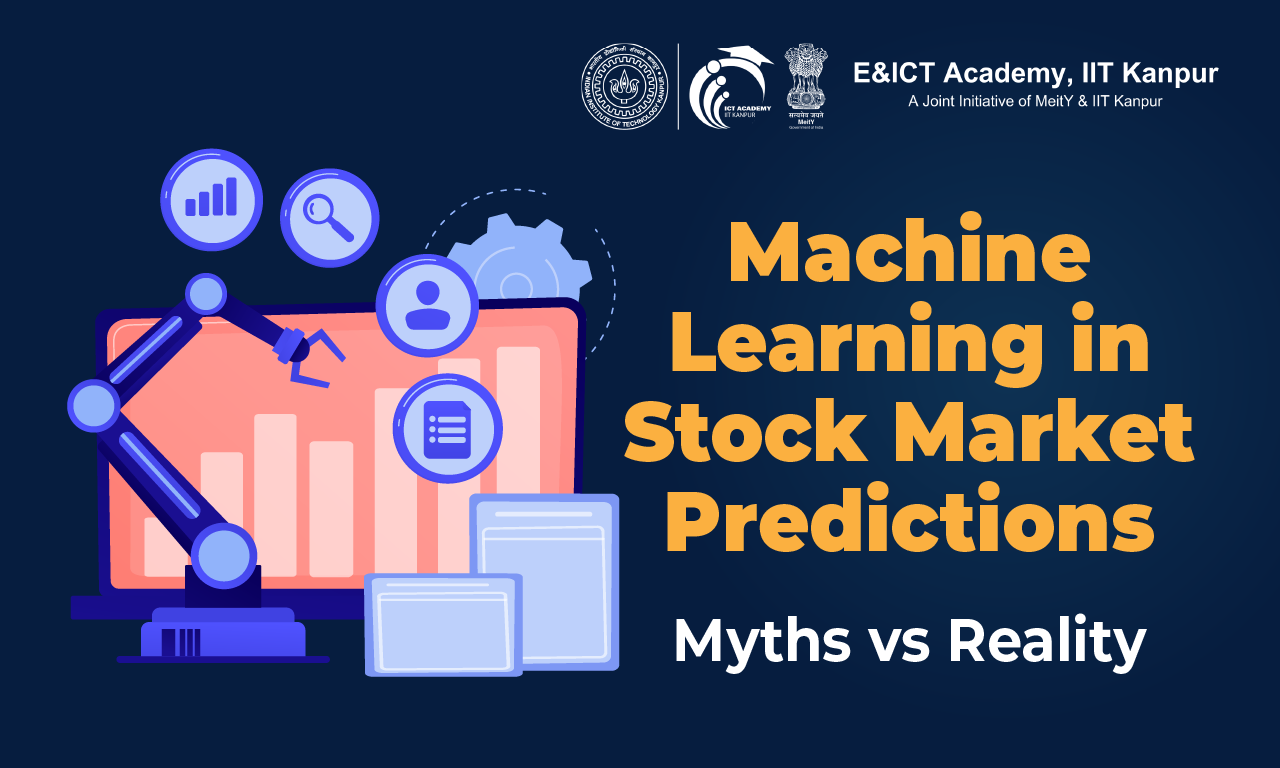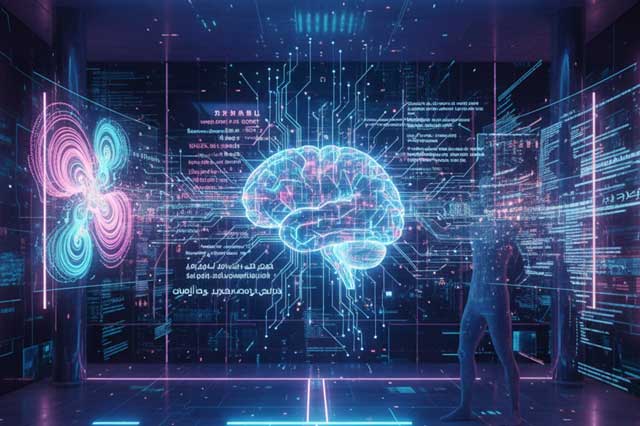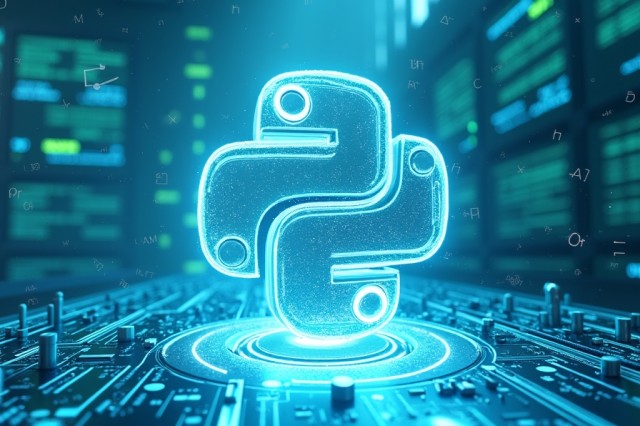Machine Learning in Stock Market Predictions: Myths vs Reality

Machine Learning in Stock Market Predictions: In the past five years, Machine Learning (ML) has emerged as a transformative technology across industries. Finance is one of them. One of the major focus use cases of ML in finance is stock trading. The promise is compelling, too. The system learns from vast historical data on prices, volumes, macroeconomic indicators, and sentiments and forecasts future stock market behaviour.
However, the hype has given rise to debates and myths surrounding the use of machine learning in the stock market. Can ML tools make predictions about the stock market? Or, is fundamental or technical analysis a play of an AI algorithm?
The main question is how much of this AI promise is grounded in reality. This article cuts through the noise, separating the myths from the realities of ML in stock market predictions.
Also Read: AI vs Machine Learning in Finance
Top 6 Myths vs Reality Checks on ML in Stock Market Predictions Decoded
Before we discuss the myths, it’s important to remember that stock markets are complex arenas. Countless factors, such as economic data, geopolitical events, investor psychology, and unexpected shocks, influence them. Hence, applying machine learning (ML) in finance can be a great starting point for analysing stock market patterns and signals.
But it is not a crystal ball. So, let’s separate fact from fiction.
Myth 1: Machine Learning Can Accurately Predict Stock Prices
It has become a preconceived notion that machine learning models are the best automation solution to forecast stock prices with pinpoint accuracy. The reality is more nuanced.
While ML excels at detecting patterns in historical price movements, it struggles with financial markets’ chaotic and often irrational nature. Sudden events like wars, pandemics, or regulatory changes, which traders call “Black Swan” events, are nearly impossible to predict, even for the smartest algorithms.
Imagine training an ML model on five years of stable market data. When an unexpected global crisis hits, the model’s predictions can become wildly inaccurate because it has never “seen” anything like it before.
Instead of precise price predictions, ML is better at generating probabilistic insights and risk assessments, helping traders make more informed decisions rather than guarantees.
Myth 2: Feeding More Data Gives Better Stock Predictions
While large datasets can improve models’ learning capability, the quality and relevance of data are far more important. Flooding a model with irrelevant, noisy, or outdated terabytes of data can cause overfitting. The model may hallucinate and give false predictions on financial markets.
Now, imagine a hedge fund that decides to train a model to make stock predictions for Tesla. You feed it 10 years of data and millions of tweets by founder Elon Musk. This includes noise and clutter data like Dogecoin memes. But the model won’t differentiate and start associating that data with current scenarios.
Instead, financial institutions or brokers must adopt a pragmatic approach and focus on high-quality signals like:
- Using structured financial data (earnings reports, macroeconomic indicators).
- Filter social media for verified news (e.g., regulatory filings, CEO statements).
- Dump data over 4-5 years (markets evolve too fast).
Myth 3: ML Trading Bots Work Perfectly Without Human Intervention
Even though AI-powered trading bots operate continuously, they still need a human eye. Markets evolve, regulations change, and algorithms can malfunction or behave unpredictably, especially during periods of extreme volatility.
Traders need to monitor performance, tweak models, and step in when things go sideways. For instance, the 2010 Flash Crash exposed how automated trading systems can exacerbate market drops without timely human intervention.
Myth 4: ML Removes Behavioural Biases in Trading
We may wonder if, unlike emotional humans, ML models are purely rational and immune to biases. But the reality is that ML inherits biases from training data (e.g., overfitting, past bubbles, or herd behaviour).
If these patterns exist in training data, the model may unintentionally replicate or amplify biased behaviours unless specific bias-correction techniques are applied. Therefore, understanding and mitigating bias is a tough nut in machine learning model development.
Myth 5: ML Replaces Fundamental or Technical Analysis
Reality: ML is not a magic bullet that replaces traditional stock analysis methods. Instead, it is an advanced tool that enhances both fundamental and technical analysis.
For example, ML can automate the generation of technical indicators, analyse unstructured sentiment data from news and social media, and uncover subtle relationships between variables that humans might miss.
Yet, expert human judgment remains indispensable for interpreting ML outputs and making informed trading decisions.
Myth 6: More Complex Models Always Deliver Better Results
There’s a common belief that the more complex or “deep” an ML model is, the better it performs on stock market predictions.
However, complexity doesn’t always equal accuracy. Deep learning models with many layers require huge amounts of clean, relevant data and fine-tuning. Without this, they risk overfitting or “hallucinating” patterns that don’t exist, leading to false confidence.
For example, a simple tree-based or regression model might outperform a complex neural network when predicting short-term price movements, especially with limited or noisy data.
Successful ML in finance often comes from combining simpler models with domain knowledge, human intuition, and rigorous validation rather than chasing complexity for its own sake.
Are We Trusting ML with Market Futures?
So, are we handing the future of the market into the hands of machine learning algorithms altogether? Absolutely not. ML in finance is best conceived as an intelligent assistant in the stock market. From LTSM, regression models to sentiment analysis, ML has opened new doors in stock market predictions. It excels at detecting subtle patterns in technical data streams, automating technical indicator generation, and even incorporating sentiment and alternative data.
However, when markets shift abruptly, like COVID-19 or Black Swan events, the ML algorithm falls short. Moreover, it lacks transparency unless paired with explainability frameworks and requires disciplined model validation and risk management.
In essence, successful applications of ML in finance are incremental and hybrid, not wholesale substitutions of human judgment. With the volatility of the stock market, humans are still the ones making the last calls.
Recommended Courses

Advanced Certificate Program in AI for Leaders

AI & Digital Transformation

AI for Managers

AI for Managers

Artificial Intelligence

Deep Learning with Generative AI for Computer Vision

Generative AI

Generative AI Course

Machine Learning with Python

Professional Certificate Course in Generative AI and Machine Learning

Professional Certificate Program in Leadership with AI



